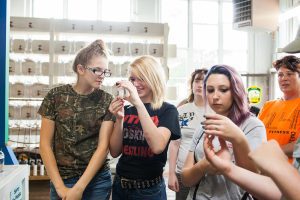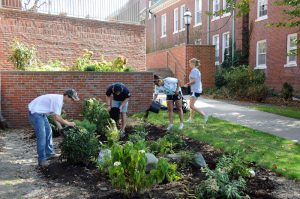The AP Environmental Science exam is finished and there are no more FRQ’s or multiple choice questions to think about for the rest of the year! As you are wrapping up the school year, what are some projects or learning experiences your students can engage in after the APES test?
Below are five ideas that give students an opportunity to dive deeper into the environmental science content they learned throughout the school year. The AP exam is over – try out these meaningful activities!
1. In-Person and Virtual Field Trips for Students

Extend what students learned this year by traveling to a local recycling plant, wastewater treatment plant, power plant, etc. You can search for field trips opportunities near you with this field trip directory. If you aren’t able to travel outside of the classroom, consider a virtual field trip. Check out this list of virtual field trips from We Are Teachers that includes virtual experiences like exploring a zoo, aquarium, recycling center, national parks, and more! After the field trip, have your students complete a reflection about how the experience connects to prior learning from the year.
2. Engage in Citizen Science Projects
Citizen science projects give AP Environmental Science students the opportunities to make a difference by collecting and sharing data to advance science learning! Check out citizenscience.gov to find projects where students can contribute to scientific studies for NASA, NOAA, and many other government agencies. Another great place to look for citizen science projects that interest your students is SciStarter. Have your students pick their own citizen science project, or complete one as a class, and record and share the data and learnings!
3. Mentor/Teach Younger Students
Have your students collaborate with an elementary or middle school teacher to lead a lesson in their class. PopEd lessons like Panther Hunt or More or Less, cover APES concepts but are great for elementary and middle school students. You could also have your students lead a citizen science project like Project Squirrel, which is great for younger students. After students finish working with younger students, have them reflect on their presentation or experience and what they would do differently next time.
4. Participate in a Science Contest
Even though the World of 8 Billion contest is closed for official judging this year, your students could make videos using the resources on the competition website. Then have a watch party and use the criteria in the judging rubric to determine a class winner! Other science competitions that have your students use their artistic skills to speak about environmental issues, and are open after the AP exam, are the Ocean Awareness Contest and the Student Podcast contest from the New York Times.
5. Take Civic Action
With focus off of the AP exam, your environmental science students can tackle environmental issues they care about with the World of 8 Billion Activism Toolkit. In groups, students define a challenge within their community, come up with a plan to mitigate or solve it, and then carry out or test their plan. Students could also use data from a citizen science project to help understand the issues further. Check out the teen Activism Toolkit for ideas on how to get started, planning templates, and more!

Image credits: Field trip (2015 Utica High School Field Trip by Ohio Sea Grant is licensed under CC BY-NC 2.0); Students planting garden (AP Environmental Science by St. George’s School is licensed under CC BY-SA 2.0)




